Hawaiian Adventure
- At August 14, 2017
- By Firstmate
- In Canon EOS 5DS, DxO Optics Pro, Hawaii, Nik Software
 0
0
A little over a month ago I returned from Hawaii and since then have been processing photos taken there. It was an adventure in the real sense of the word since the State of Hawaii is so unique in many ways. I had signed up to take the Canon Live Learning Workshop and knew it would be challenging simply due to the hours I would be up (early mornings and late nights), but also the conditions (heat, terrain) and distances I would have to travel. Without going into detail, let it suffice to say the first day of the shoot, I was up at 3:30 AM and came back to my hotel room at 1 AM the next day.
The shoot started at Laupahoehoe Point on the Big Island, proceeded to Akaka Falls, then to Punalu’u Black Sand Beach, then finally at Kilauea Volcano in Volcanoes National Park. It was an exhausting day but one which challenged me to think on my feet, meaning that I actually started seriously using manual mode and also playing with the three components of EV (exposure value), namely shutter speed, f-setting, and ISO, in a creative manner. I made many mistakes, and there were lost opportunities, but ultimately I knew when the opportunities were lost.
While I would have liked to have made more creative shots, I can honestly say I grew in my understanding of applied photography despite not making the best shots I could have.
The current shot is of Kilauea Volcano taken in the afternoon of the day before my night shoot of the volcano and Milky Way. My supportive wife was with me and it was my first introduction to Kilauea, my position being right in front of the so-called rangers station some distance from the volcano, simply because the emitting gases would not allow a closer approach.
The shot was taken with a Canon 5 DS, EF24-105mm f/4L IS USM @ 105mm, f/8, 1/400, 1600 ISO, manual exposure, and no tripod.
Conditioning
- At June 07, 2017
- By Firstmate
- In Canon EOS 5DS, DxO Optics Pro, Nik Software, RI
 0
0
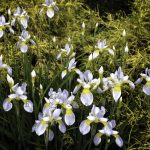 Never did I think that photography would be so demanding, at least if you wanted to take more than just a snapshot, but rather a special moment that immediately grabs and holds one’s vision. In other words, an “Ah” moment. The moment which is special and captures the essence of the vision before you.
Never did I think that photography would be so demanding, at least if you wanted to take more than just a snapshot, but rather a special moment that immediately grabs and holds one’s vision. In other words, an “Ah” moment. The moment which is special and captures the essence of the vision before you.
One truly must get into physical shape as well as visual (i.e., the art of seeing) shape and technical shape (knowing one’s tools of the trade). It has been a most deplorably wet spring here in New England this year. Instead of being outside and shooting, I have been inside and studying photography. Both are obviously needed, but being outside and shooting is more fun.
I have been preparing for my photo shoot on the Big Island of Hawaii at the end of this month, anticipating what I would need for certain situations, namely, night shooting of the Milky Way with possible inclusions of Mt. Kilauea lava flows, high contrast shots of the oceans and waves, sunrises and sunsets on ocean panoramas, rain forests and tropical gardens with shadows and probable glare, and last but not least surfers and denizens of the Hawaiian paradise. In this regard, I am bringing along rain gear for me and my camera, and a host of various filters to assist in getting the best shot. I wish I did not need to bring along my MacBook Air, simply because I like to travel light. But I guess there is a price to pay for the perfect shot(s).
The currently posted photo is of white irises around our house. They are abundant this spring and have looked the best they ever have due to the rainy spring. The photo was taken with a Canon 5DS, EF16-35mm f/2.8L USM @ 35mm, f/8.0, 1/50, ISO 100, processed with DxO Optics Pro 11, Adobe Camera Raw, using a Photoshop gradient map, and Color Efex Pro.
The Mind’s Eye
- At May 24, 2017
- By Firstmate
- In Lumenzia, Nik Software, Photographic Technique
 0
0
Over the last few weeks I’ve been preparing for my upcoming photo shoot in Hawaii in June. I’m anticipating challenging conditions both physically (heat and cold) and photographically (lighting extremes). I am less concerned about the former and more concerned about the latter. Consequently, I acquired graduated ND filters as well as standard ND filters of varying densities to deal with Hawaiian light.
Also, I discovered a wonderful product for my screw-in filters, namely Xume magnetic adaptors, which allow me to by-pass the screw-ins and simply stick the filters on magnetically. They were a little costly but, when in the field shooting, time is of the essence.
I’ve included the current blog post photo to summarize the current state of my thinking, photographically. That is, when I see a scene, I not only am seeing the scene but also I am projecting onto this scene various personal attributes (how I value certain things as colors, light, object as well emotive elements as warmth, aversion, mystery, joy, etc.). The current blog photo was taken with a Canon Powershot G2 camera many years ago. It was highly contrasted and blown out with mid-day light. Only by using some post-processing techniques was I able to salvage what my mind’s eye saw at that moment. The mind’s eye image stayed within me for years and only recently due to learning and using techniques to shape the image to conform to my mind’s eye was I able to get the image before you.
The current image was shot high above Positano, Italy, in May 2011. Post processing used Lumenzia PS Extension, a gradient map, as well as Color Efex Pro.
Creating
- At April 04, 2017
- By Firstmate
- In Canon 30D, Cape Cod, Composition, Key West, Nik Software
 0
0
The title to this post is meant to be interpreted simply, namely, describe the ad hoc or even de factor act of creating something. Naturally, it is not creating something from nothing (even in the extend sense of that word), but the act of combining elements to make a new presentation or composition of something.
In photography this is called compositing (creating a compo), and I have stayed away from this type of post-processing, simply because it is an art unto itself, and I wanted to get into the act of capturing what creation presents before my camera and lens. This was difficulty enough of a task for me.
Although recently I have relented and attempts to create a combo. You see, I loved the sky in one photograph and in another photograph I love the main element (the condor) and not the background (the sky). So, I wanted to meld the two to create a blend of the best.
The current compo in this post was created thusly: Both photos were taken with a Canon 30D and 24-105mm f/4L IS USM lens. The sky was shot off of Chatham Lighthouse Beach on Cape Cod, f/4, 1/5000, ISO 800. The condor was shot in Key West, Florida, f/14, 1/100, ISO 100. The actual compo was processed with Nik Color Efex Pro.
Luminosity Masks to the Rescue
- At March 30, 2017
- By Firstmate
- In Canon 30D, DxO Optics Pro, Key West, Lumenzia, Nik Software
 0
0
In an effort to cover my mistakes when learning the skills of photography, either through down and out errors in not attending to my camera settings for particular shots or just due to being “forced” to take the shot just to get the shot, I have been learning options in post processing with Photoshop. One particularly powerful option which attracted me for some time was luminosity masks. I tried using them in the past but it seemed a chore to use them. However, I finally developed my own action to automate the process. This was a better approach, but it still was a more than simple approach.
Then I discovered Lumenzia by Greg Benz, which is a plugin for Photoshop and is ridiculously inexpensive. In a nutshell, Lumenzia (which is actually a suite of several small programs doing more than luminosity masks) allows the user to try different luminosity masks before committing to a particular one best suited for their needs. It does have a learning curve and one has to know what one is doing, but it’s streamlined approach is such that one can grow into the program (aka plugin).
The current photograph was taken in Key West several years ago in early Spring. It was taken with a Canon 30D, 24-105mm lens (f/4) @ 55mm, f/9, 1/250, ISO 100, processed with DxO Optics Pro, Adobe Camera Raw, Lumenzia, and Color Efex Pro.

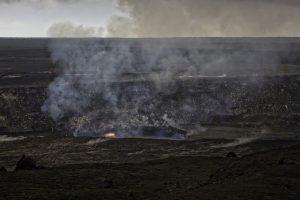
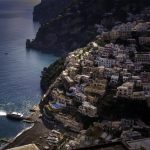
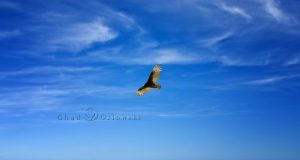
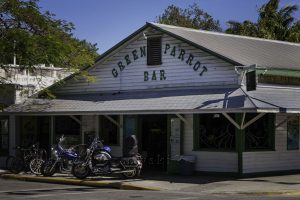
Recent Comments